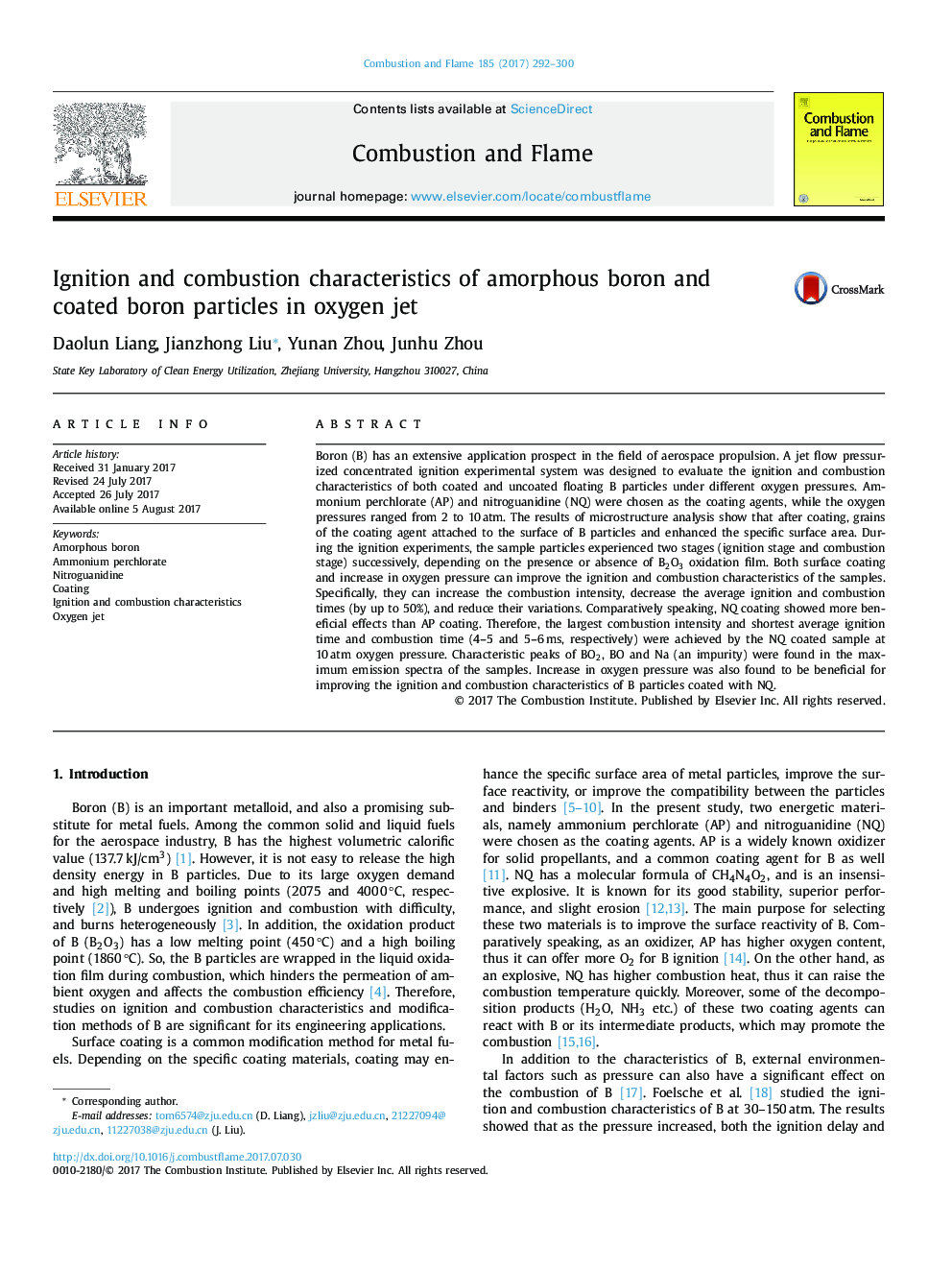| Article ID | Journal | Published Year | Pages | File Type |
|---|---|---|---|---|
| 6468082 | Combustion and Flame | 2017 | 9 Pages |
Boron (B) has an extensive application prospect in the field of aerospace propulsion. A jet flow pressurized concentrated ignition experimental system was designed to evaluate the ignition and combustion characteristics of both coated and uncoated floating B particles under different oxygen pressures. Ammonium perchlorate (AP) and nitroguanidine (NQ) were chosen as the coating agents, while the oxygen pressures ranged from 2 to 10â¯atm. The results of microstructure analysis show that after coating, grains of the coating agent attached to the surface of B particles and enhanced the specific surface area. During the ignition experiments, the sample particles experienced two stages (ignition stage and combustion stage) successively, depending on the presence or absence of B2O3 oxidation film. Both surface coating and increase in oxygen pressure can improve the ignition and combustion characteristics of the samples. Specifically, they can increase the combustion intensity, decrease the average ignition and combustion times (by up to 50%), and reduce their variations. Comparatively speaking, NQ coating showed more beneficial effects than AP coating. Therefore, the largest combustion intensity and shortest average ignition time and combustion time (4-5 and 5-6â¯ms, respectively) were achieved by the NQ coated sample at 10â¯atm oxygen pressure. Characteristic peaks of BO2, BO and Na (an impurity) were found in the maximum emission spectra of the samples. Increase in oxygen pressure was also found to be beneficial for improving the ignition and combustion characteristics of B particles coated with NQ.
